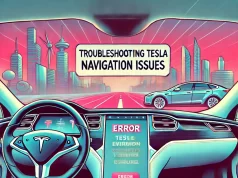Some Tesla owners have encountered issues with their wireless chargers, such as inconsistent charging, slow charging, or no charging at all.
This can be frustrating, especially when you rely on your phone for navigation, entertainment, or communication while on the road.
If you’re facing this problem, there’s no need to worry.
Why Tesla Wireless Charger Not Working?
You can follow these simple steps to troubleshoot and resolve your Tesla wireless charger issue:
#1. Verify wireless charging compatibility
Ensure that your phone supports wireless charging and is Qi-enabled. Wireless charging is not universally available on all phones, so it’s important to check if your device has this capability.
You can find the specifications of your phone online or in the user manual. If your phone doesn’t support wireless charging, you’ll need to use a cable or a wireless charging adapter.
#2. Remove potential obstacles
Check for any obstructions that might block the wireless charging signal. Some phones have features like cameras that protrude from the back, preventing full contact with the charging pad.
Additionally, thick phone cases or cases with metal components can interfere with the wireless charging signal. Try removing these obstacles and see if your phone charges more effectively.
#3. Find the optimal position
Experiment with different positions on the charging pad. Some Tesla drivers have reported that the wireless charger works better on one side than the other.
Try switching sides or adjusting the position of your phone slightly up, down, left, or right on the pad until you find a spot where it charges consistently. You can also use a rubber band or a Velcro strap to secure your phone in place.
#4. Check the charger’s connection and condition
Ensure that the wireless charger is properly connected and in good condition. Sometimes, the charger may not function due to loose connections or damage caused by water, heat, or physical impact.
Check the USB cable that connects the wireless charger to the car’s USB port by unplugging and plugging it back in. Examine the wireless charger for any signs of damage such as cracks, burns, or corrosion.
If you notice any damage, you may need to replace the wireless charger.
Contact Tesla support if troubleshooting fails
If none of the above steps resolve the issue, it’s recommended to reach out to Tesla support for further assistance. You can contact them through their website, app, or phone number and explain the problem you’re experiencing.
They may require additional information such as your VIN number, firmware version, and photos or videos of the issue.
They might also guide you through additional troubleshooting steps or help you schedule a service appointment if necessary.
The Tesla wireless charger is a convenient feature that enhances your driving experience. However, when it malfunctions, it can be frustrating.
By following these troubleshooting steps, you can potentially resolve your Tesla wireless charger problem and once again enjoy the benefits it offers.




